Lee Dares
From Discourse 13
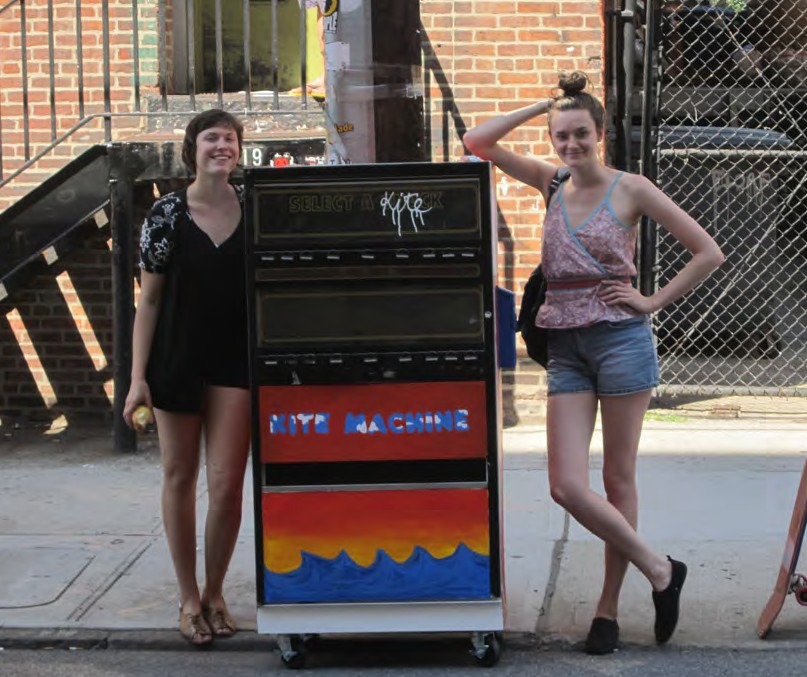
The Kite Collective. Whitney Richardson and Lee Dares with the Kite Machine.
The Kite Machine was the first of a series of itinerant exhibitions of handmade, low-cost miniature kites available in refurbished vending machines in various communities, beginning with Far Rockaway, Queens, New York City. The goal of the project was to provide people with accessibility to kiteflying as an art, a pastime, or a way of life. We wanted to reach as many people as possible with our human resources and the results far surpassed our expectations. In this report, the pro- cess of conceptualizing, building, and fundraising the machine and our observations will be covered, along with future plans for the constantly evolving project.
Last spring, the initial members of the collective were in the experimental phase of kitemaking. Taking tips from their grandparents who made kites during the Great Depression out of what- ever materials they had on hand, the Kite Collective began finding unique materials and designs that emphasized practicality. Then they began teaching workshops based on reusing household items, such as newsprint, barbeque skewers, food coloring, and for more advanced students, using windbreakers, needles and thread. This approach to kitemaking emphasized learning from our past and giving it new meaning in today’s fast-paced, overly abundant society by making the most out of what we already have. The workshops gained popularity and it came to a point where we wanted to reach more people but with our other jobs and busy lives, we couldn’t teach all the time. So we came up with a self-sufficient kite dispenser that would imbue our love of kites and kitemaking, and provide the community with access to kites.
The project momentum officially began upon finding a vending machine at a local flea market this past June. It took under a week to get it painted and ready to start selling kites. Up to this point, we had no idea how to make miniature kites, let alone package them, so the design pro- cess began. The height of each slot was only 10” so we were put under severe limitations for our designs. We had to find a flat kite, which could be scaled down to fit the slots. We started off with a Bermuda kite made of rip stop nylon material from a used windbreaker. We had to make the materials of the kites as light as possible to ensure they would have enough lift to go up, to compensate for the somewhat heavy lined fabric. For the flying line we tried everything from fishing line, which proved to be too coiled and difficult to wrap spools individually, to twisted nylon kite line, which made the kites spin out of control, until we settled on spools of plain old sewing thread. It was light enough for the kite to lift it, and readily available at our local dollar store.
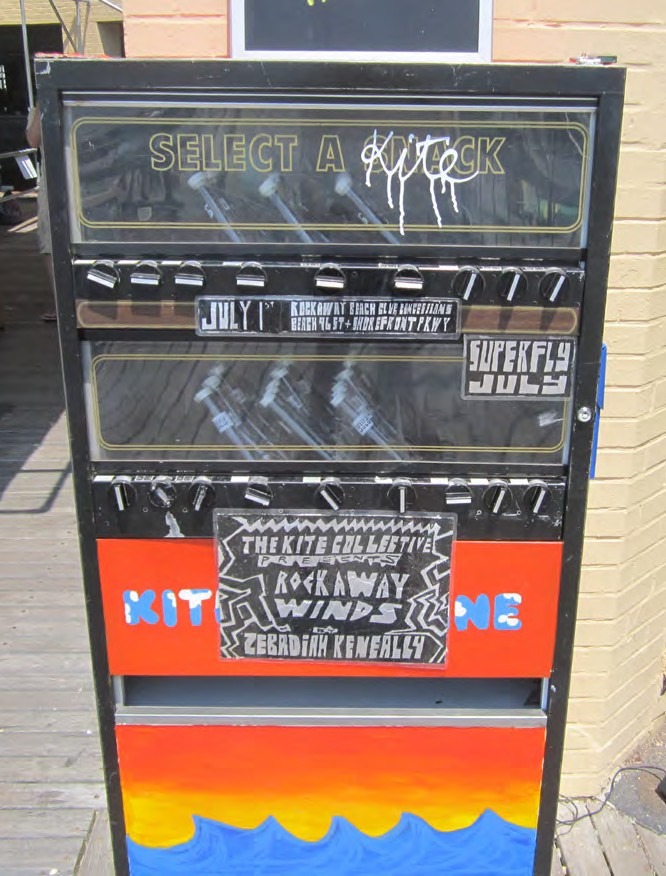
The Kite Collective. The vintage snack-turned-kite machine.
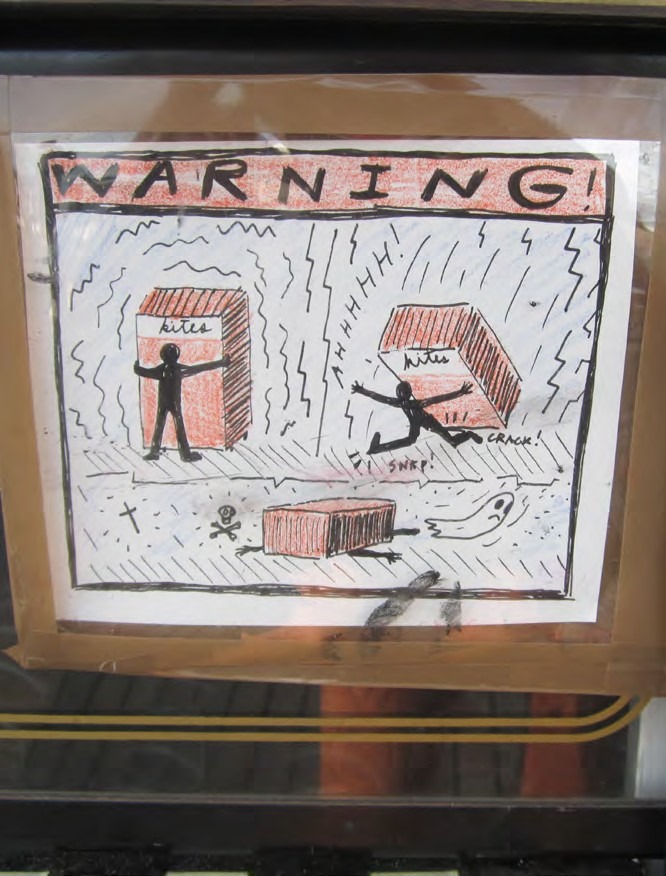
The Kite Collective. A disclaimer added to the Kite Machine.
The next task was figuring out how to package the kites. We brainstormed one evening and some of our ideas were cardboard boxes, acrylic cases, zip lock bags, test tubes and even not having any packaging at all and just putting the kites straight into the machine. We decided some sort of tube was the way to go, and quickly found a distributor of acrylic tubes in the correct dimension. We rolled up the prototype kite leaving one of the three spars, a coffee stir stick, attached with the other spars joined by a small thread in the center, so that the user could see how to assemble it at a glance. Several adjustments to the design were needed over the course of the summer. Notable were adding a longer tail to stabilize the kite, adjusting the length of the bridle legs, and changing the material of the tail from biodegradable to plastic as our supplier ran out of stock, but overall the original design won the game as it outlasted the other kite designs, the della Porta and sled kites, in its simplicity of design and easy flying ability.
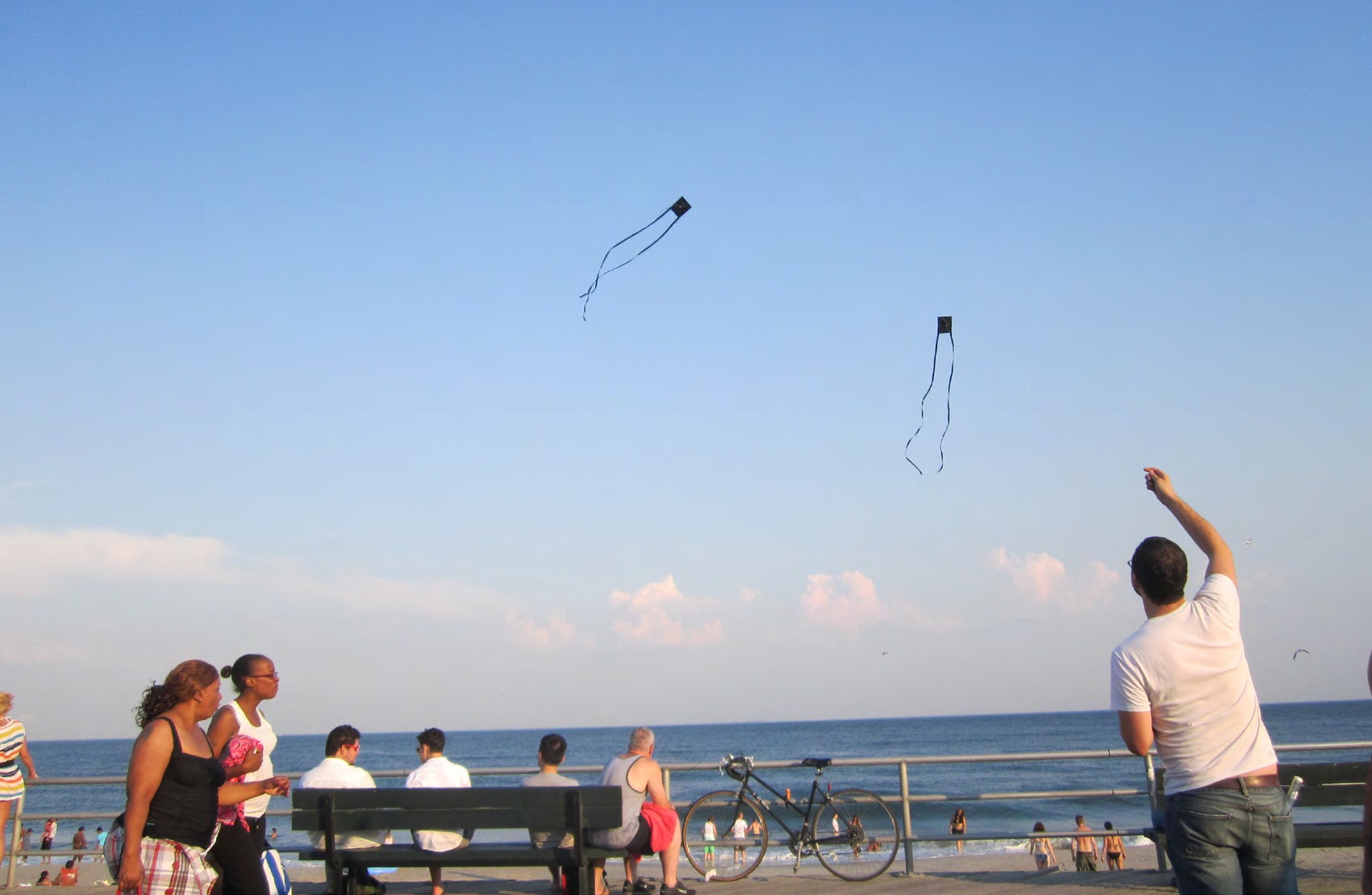
The Kite Collective. Flying kites on the boardwalk at Rockaway Beach, New York City.
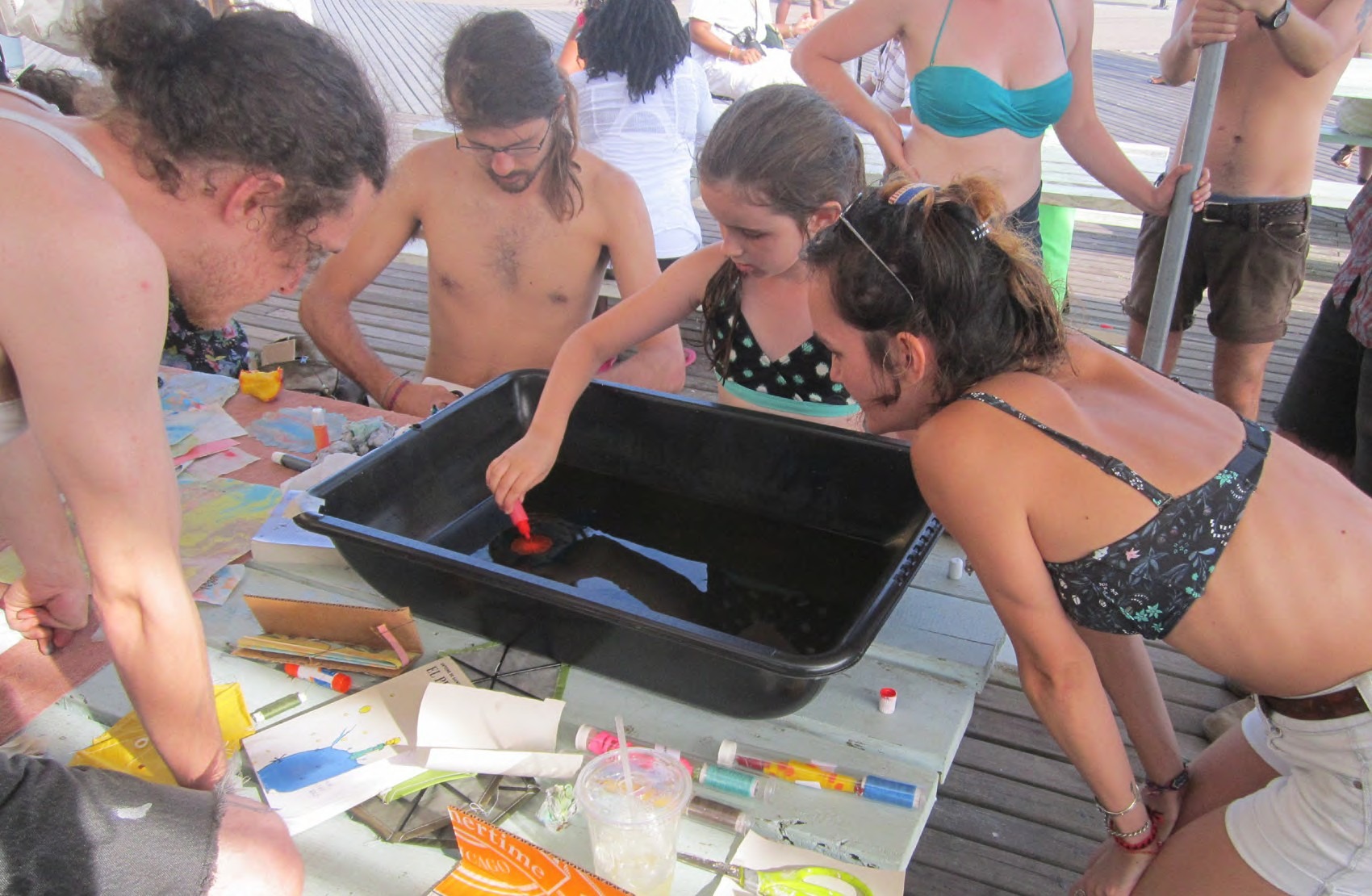
The Kite Collective. Members of the Kite Collective making kites with kids of all ages at Rockaway Beach.

The Kite Collective. Kites sold in the Kite Machine come semi-assembled in a tube.
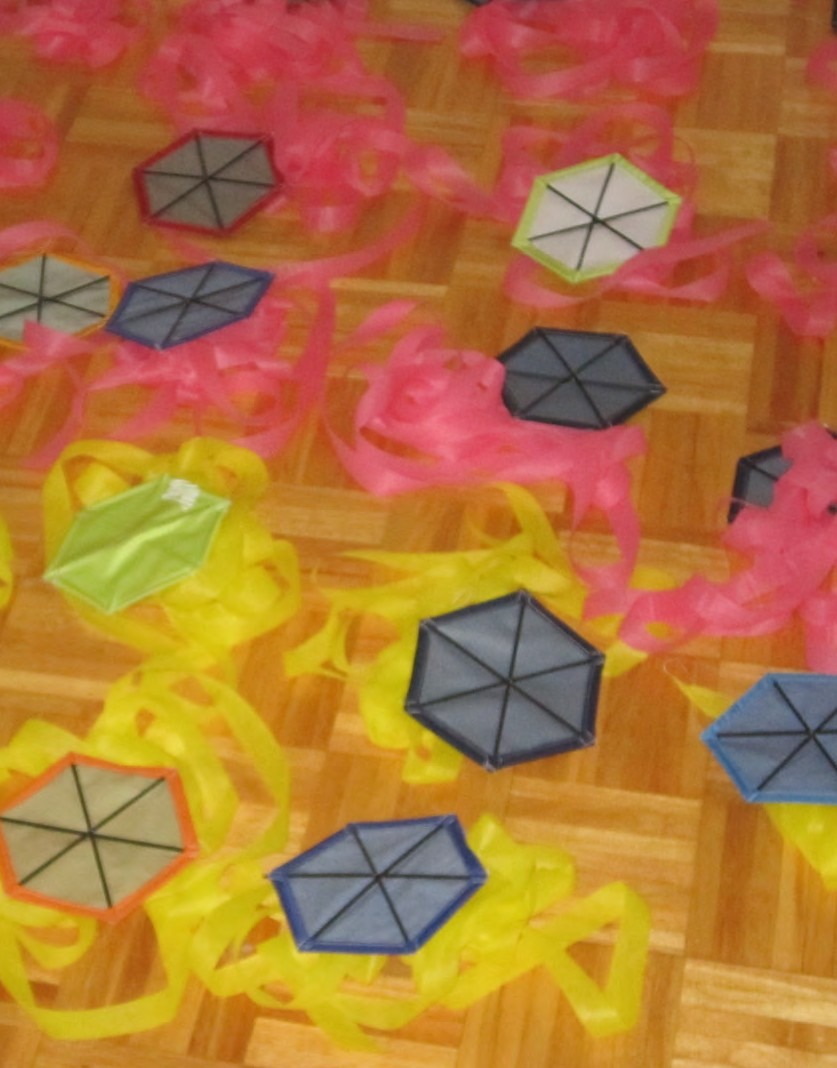
The Kite Collective. Kites waiting to be rolled and stuffed into tubes.
Over the course of the summer, around 200 kites were distributed per month, 650 in total. The clientele were young, old, newcomers to kiteflying, and people that have done it all their lives. Some people offered to help us make them when they saw us kitemaking beside the machine. We welcomed their assistance with gratitude. The greatest experience of all was seeing children fly the kites and carefully look after them. Watching them bring the kites down ever so slowly, so as not to make a knot in the flying line, and then rolling them up to take home and save for next time, was gratifying and heartwarming.
With all said and done, the Kite Machine has proven to be successful. Here at the Kite Collective, we all agree we have learned a way to communicate with people without speaking, to appreciate the differences that make us unique, and to find common ground between us all. We plan to extend the project to different communities, spreading the joy and peace we have shared with the community at Rockaway with many more people in years to come. We appreciate the abundant support given by numerous organizations, such as Patagonia, Let’s Fly Kites, Kickstarter and the Drachen Foundation. They have helped make this project possible.

